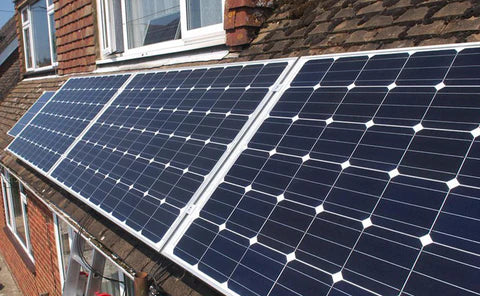
Six Structural Forms of Building Integrated Photovoltaic
Building integrated photovoltaic has become a major direction led by science and technology of the times. People are no longer unfamiliar with BIPV, which has become a synonym for scientific and technological progress and technological development. From the current well-known collection of photovoltaic and buildings, there are two main categories: photovoltaic curtain wall and photovoltaic roof. According to the development trend of BIPV, six structural forms have already taken shape.
1: The horizontal and vertical frames that do not expose the outer surface of curtain wall glass.
We can't see the "skeleton" and frame of the glass, only the glue joint and installation joint can be seen. The installation and fixation of components are mainly realized by structural glue. The overall plane of the curtain wall is beautiful, harmonious and unified, novel and transparent, and the whole shows a simple and fashionable style.

2: Both horizontal and vertical frames that are exposed on the outer surface of curtain wall glass.
It can be seen that the "skeleton" and frame of the glass, the surface of the curtain wall presents a rectangular lattice style, and the installation and fixation of the components are mainly realized by the bonding of structural adhesive and the crimping of components, showing a relatively obvious sense of hierarchy as a whole. The photovoltaic components and keel materials are decorative to each other, showing an architectural aesthetics of the new era.
3: All glass components are fixed on the support structure through the support device.
Through the form of holes in the four corners of the glass, the bolts are fixed. The bolts are parallel to the surface of the glass to ensure the internal and external circulation and integration. The installation and fixation of components are mainly carried out by the connecting parts of the supporting structure, which are completed by structural adhesive bonding. The interior is bright and transparent, which is more suitable for installation in the lobby and doorway of large buildings.
4: Flat roof.
It belongs to the semi building combined application mode. The cement strip or cement belt is built by using the rooting or non rooting bottom plate combination mode, in which the anchor bolts are embedded to fix the component support. The overall construction mostly adopts the steel structure. Generally speaking, it is more economical, but the anti-corrosion and waterproof treatment should be done well.

5: Photovoltaic ceiling.
Components are required to be transparent, so the efficiency of components is low. Other aspects also have corresponding requirements, in addition to transparency and power generation, they also have Certain multiple factors of mechanics, aesthetics and structural connection.
6: Photovoltaic curtain wall.
Photovoltaic curtain wall is the most widely used form at present, thanks to its flexible construction methods, strong adaptability of the main structure and mature technology. In the future, it is expected to realize technological production, which has the advantages of ventilation, heat and sound insulation, energy conservation and environmental protection. And it can effectively improve the heat dissipation of components, reduce the temperature of battery chips, and reduce the efficiency loss of components. Compared with other installation forms, it has a longer service life, and may be promoted and applied in the field of large buildings in the future.
To learn more about building integrated photovoltaic, please follow XINPUGUANG official website:
Facebook: Xinpuguang Solar Panel Instagram: xinguang_solar
Pinterest: XinpuguangSolarPanels
Homepage: https://xinpuguangsolar.com
Email address: Philip@isolarparts.com
- A escolha de uma seleção resulta em uma atualização completa da página.
